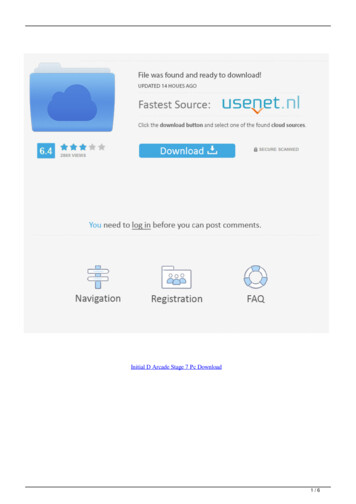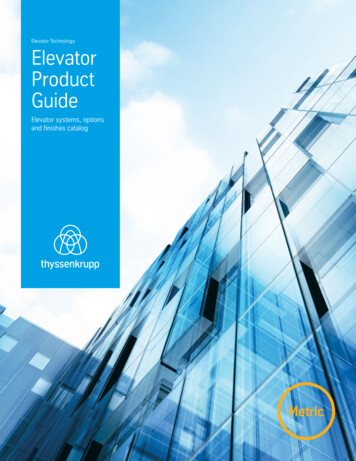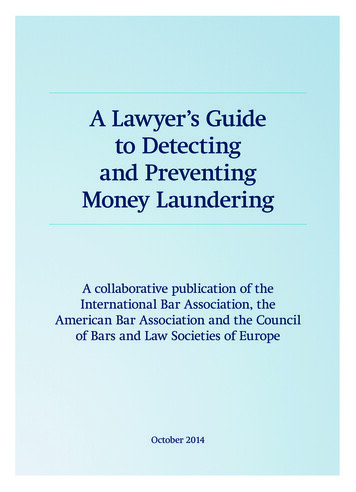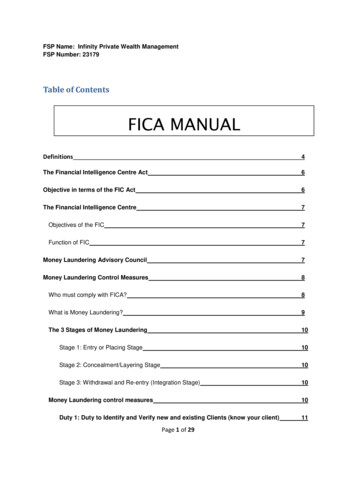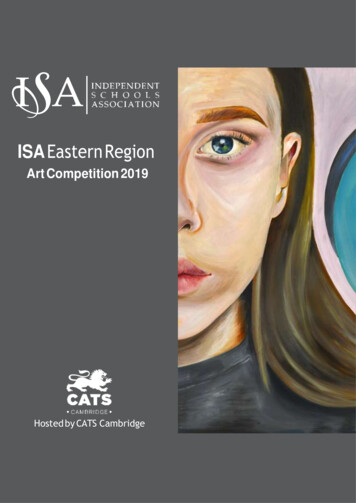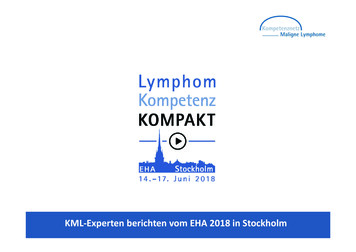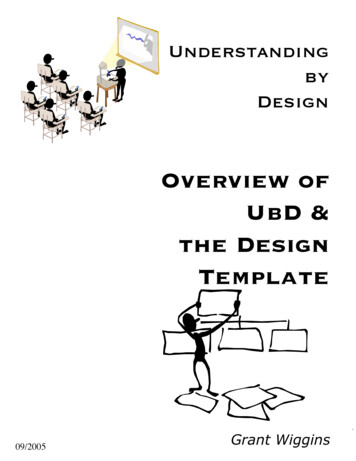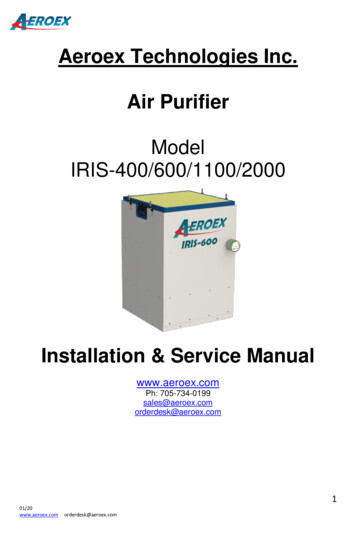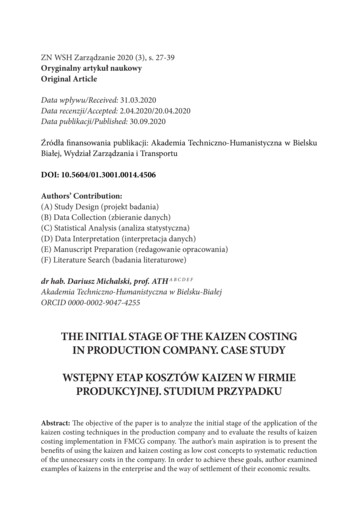
Transcription
ZN WSH Zarządzanie 2020 (3), s. 27-39Oryginalny artykuł naukowyOriginal ArticleData wpływu/Received: 31.03.2020Data recenzji/Accepted: 2.04.2020/20.04.2020Data publikacji/Published: 30.09.2020Źródła finansowania publikacji: Akademia Techniczno-Humanistyczna w BielskuBiałej, Wydział Zarządzania i TransportuDOI: 10.5604/01.3001.0014.4506Authors’ Contribution:(A) Study Design (projekt badania)(B) Data Collection (zbieranie danych)(C) Statistical Analysis (analiza statystyczna)(D) Data Interpretation (interpretacja danych)(E) Manuscript Preparation (redagowanie opracowania)(F) Literature Search (badania literaturowe)dr hab. Dariusz Michalski, prof. ATH A B C D E FAkademia Techniczno-Humanistyczna w Bielsku-BiałejORCID 0000-0002-9047-4255THE INITIAL STAGE OF THE KAIZEN COSTINGIN PRODUCTION COMPANY. CASE STUDYWSTĘPNY ETAP KOSZTÓW KAIZEN W FIRMIEPRODUKCYJNEJ. STUDIUM PRZYPADKUAbstract: The objective of the paper is to analyze the initial stage of the application of thekaizen costing techniques in the production company and to evaluate the results of kaizencosting implementation in FMCG company. The author’s main aspiration is to present thebenefits of using the kaizen and kaizen costing as low cost concepts to systematic reductionof the unnecessary costs in the company. In order to achieve these goals, author examinedexamples of kaizens in the enterprise and the way of settlement of their economic results.
28Zeszyty Naukowe Wyższej Szkoły Humanitas. ZarządzanieKeywords: kaizen costing, management accounting, kaizen, cost management, decision makingStreszczenie: Celem artykułu jest analiza wstępnego etapu zastosowania technik kalkulacji kosztów kaizen w firmie produkcyjnej oraz analiza kalkulacji kosztów kaizen w firmieFMCG. Głównym dążeniem autora jest przedstawienie korzyści wynikających z zastosowania rachunku kosztów jako koncepcji o niskim koszcie do systematycznej redukcji niepotrzebnych kosztów w firmie. Aby osiągnąć te cele, autor zbadał przykłady kaizenów w przedsiębiorstwie i sposób rozliczenia ich wyników ekonomicznych.Keywords: rachunek kosztów costing, rachunkowość zarządcza, kaizen, podejmowanie decyzji, zarządzanie kosztamiIntroductionNew, practical concepts of costs management are needed to achieve by companies’complex goals. Constantly growing requirements of global economy requires frompresent-day companies to be stimulated to creative thinking and an to innovativemanagement approach. Hence measurable financial success of the enterprise needseffective cost management based on the methods and tools that look for the costsreduction. Kaizen costing shall be perceived as method of management accountingthat supports the improvement of the economic results of companies. The growingawareness of entrepreneurs allows to take advantage of systematic and continuousimproving all processes in the enterprise. It requires continuous measurement of costscharged to the organization’s activities and consistent striving to create and implementimprovements that lead to the systematic costs optimization. Kaizen costing, answering these expectations, shall create system that is concentrated on measurement of results of the implemented improvements. It supports consciously defining goals relatedto gradual cost reduction for each department, product and process. Cost management in kaizen assumes slow and continuous optimization of processes in the company through the improvement of processes and the employee work method.1. Cost management supported by kaizen costingCompanies operate currently in very complex and risky environment that requires ensuring of being competitive in all aspects of operating activity. Continuouscosts improvement should be one of the survival anchors in the very competitivemarket. Changes, based on innovations in the market, constantly eliminate existing advantages, what means that companies should be prepared to implement newsolutions. It regards even current competitive advantages, because new ones permanently appear and new products become as the standard. It makes necessary to
The initial stage of the kaizen costing in production company. Case study29develop new solutions being the answer to the potential change. The bankruptcy ofThomas Cook is an example of such situation. Innovations damage existing business models and ruin large cost inflexible corporations – a change in the marketaffects the effectiveness of some business models.The digitalization of the global markets makes very probable that butterfly effectcan affect any company. The expansion of Google, Apple, Amazon and many otherglobal BigTech companies make such effect much more probable than before. It requires from the top management to be prepared to keep the systematic process of ensuring the costs optimization in order to survive the probable turbulences. It is obvious that companies operational activity is inseparable from bearing costs. Accordingto the principles of rational management, they should be at an optimal level. The costoptimization becomes one of the most important challenges that the production companies face when operate in the complex and very turbulence business environment.It should give some security buffer when risk materializes. Market dynamics forcesproduction companies to implement activities aiming to secure the enhancement themarket and economic position of the enterprise, or at least maintaining it at the samelevel. Otherwise, they will not be able to operate profitable in the long run. Henceproduction companies are under pressure to improve the production processes. Kaizen costing is one of the tool supporting this purpose. Conscious cost rationalizationsupports the financial situation of the company. What’s more, it allows to strive fora certain level of profit from sales, not by increasing prices or increasing sales, but bycontrolling the target value of cost reduction.Kaizen costing shall be perceived as cost management method based on thenumber of cost reduction steps, steering the elimination of waste in the production, assembly and distribution process as well as the elimination of useless work. Itsignifies management by continuous small costs improvements, regarding the relative small activities comparing to major improvements done thanks investments.Kaizen costing can be defined as the modern method of management accounting,creating mechanism for reducing and managing costs, which is now more and moreoften used in the pursuit of improving financial results by manufacturing companies. Kaizen costing (called as costs reduction accounting or constant improvementcosting) shall create the system that aims to undertake actions striving to reducethe amount of costs incurred to the desired cost centers1. It utilizes methods thatpractical application contributes to the improvement of production processes, whatshall shorten production cycles, use resources more efficiently, or improve productquality. Kaizen costing involves continuous measurement of costs charged to theorganization’s activities and consistent striving to create and implement improvements. Kaizen costing focuses on measuring the nominal effects of implementedE. Nowak, R. Piechota, M. Wierzbiński, Rachunek kosztów w zarządzaniu przedsiębiorstwem, PolskieWydawnictwo Ekonomiczne, Warszawa 2004, p. 142-144.1
30Zeszyty Naukowe Wyższej Szkoły Humanitas. Zarządzanieimprovements. Hence it shall be perceived as costs management tool for existingproducts, although main focus is put on the costs drivers not product2. This modernapproach to cost management in an enterprise assumes a slow and continuous process of rationalizing mainly the operational area of companies. Important conditionis constant improvement of processes and the style of work of employees. It relies onthe profitability of the final production.The cost reduction shall be planned in order to influence the change of the production process. Objective of kaizen costing is to reduce both the actual productproduction costs and the general overheads costs. It shall generate the reduction ofoperational costs of the company, what will be analysed on the real examples fromkaizens done in the FMCG company. The characteristic feature of Kaizen, directlycorresponding to kaizen costing, is the improvement of efficiency with relativelylow financial investments. Kaizen shall create wide organization culture dependent from commitment of employees3. Small and systematic steps towards improving current processes provide high and measurable benefits in the long term. Theimprovement process shall last in the long run, even endless, because there can beassumed that always is space to execute production and administration tasks moreefficient. Hence, each employee has important role to make independent improvement decisions, being motivated and empowered by management. General idea isthat a single improvement shall be done on daily basis. Its careful estimation shallbe the first step of each optimization activity4. On the other hand, kaizen is alsoa low risk approach, because company can always go back to old methods withoutincurring huge costs5. That is why kaizen costing do not relay on investments. Animportant element of kaizen costing is the fact that it is not a uniform concept consisting of a fixed set of rules and tools. For the purposes of process improvement,it can reach for many different instruments. Hence kaizen costing does not requirethe creation of dedicated organizational units in the company. The simplicity of thismethod allows to implemented it in all kinds of the companies. In the case of largeentities, it gives the opportunity to generate savings in the number of organizationalunits. Kaizen costing is characterized by process orientation and supporting employees in daily reporting of improvements and analyzing ideas of improvement6.The necessary condition of kazien costing is to bring in the forefront the employees of entity and to motivate them support the achievement the company’s obKaizen costing focuses mostly on operational character and its development in the most efficientmanner, occurring mainly during manufacturing of the existing products.3M. Imai, Gemba Kaizen. Zdroworozsądkowe, niskokosztowe podejście do zarządzania, MT Biznes wewspółpracy z KAIZEN Institute Polska, Warszawa 2006, p. 39-40.4E. Nowak, Rachunkowość. Kurs podstawowy, Polskie Wydawnictwo Ekonomiczne, Warszawa 2016,s. 189-190.5M. Imai, Gemba Kaizen., s. 41.6E. Nowak, R. Piechota, M. Wierzbiński, Rachunek , p. 151.2
The initial stage of the kaizen costing in production company. Case study31jectives7 (see for more in [1]). The continuous reduction of the costs requires integration in the management following dimensions8:1) business environment – market and the competition;2) integration of the skills of the various functions in the company;3) contribution of the costs decision to the company competitiveness;4) measurement of the costs improvement.As was mentioned above, the main goal in kazien costing is to eliminate lossesand reduce costs mainly in production area: Costs are generated at every stage ofproduction, from order placement, product design, through manufacture, maintenance, customer pickup and end of warranty period. It requires the cyclical analysisof the effectiveness of conducted activities in order to confirm that the taken actionis appropriate to reach assumed results. There shall be eliminated all costs (understood as waste) that are not corresponding to the added value creation. Important isto understand of the demanding features of the optimization process.Kaizen costing monitors the small costs savings that supports protection of theprofit margins generated in the all areas of operating activity, especially in conditions of decreasing prices. Kaizen costing shall be characterized by focus on following issues concerning the production area: systematic cost reduction due to improvement of production processes andoperational efficiency; achievement the intended goal, defined as the reduction of costs, brokendown into individual departments of the enterprise and manufactured products; monitoring of the assumed cost reduction to the value of actually achievedreductions as part of the deviation analysis;Kaizen costing regards mainly to overhead costs. Hence, analyzing possibility ofusage kaizen costing in cost management, it cannot be applied in all stages of valueadded calculation.The advantage of kaizen costing is the undeniable fact that small and systematicsteps towards improving process efficiency can bring high and measurable benefitsin the long term. As was mentioned previously, the improvement process shouldbe calculated constantly, because there is always something that can be done better,faster or with less work. The role of each employee is important, as he stands at thecenter of initiating any changes and is motivated to take further improvement actions. There is required an open dialogue between management and employees inorder to develop the new techniques of continuous improvement. One of the firststeps faced by kaizen costing is proper diagnosis of areas that need to be improved.More in: D. Budogan, I. Georgescu, Cost reduction by using budgeting via the kaizen method, „AnaleleŞtiinłifice ale Universităłii Alexandru Ioan Cuza din Iaşi” 2009, No. LVI.8Ibidem.7
32Zeszyty Naukowe Wyższej Szkoły Humanitas. Zarządzanie2. Analysis of Kaizen projects implementedin the production area of FMCG companyAnalysed FMCG company, striving to optimize costs, established program ofcontinuous improvement done by small steps. Employees of the studied enterpriseare encouraged to propose improvement actions under the Employee Ideas Program.This program creates a system motivating employees to make suggestions regardingimprovements in the production process, safety and management process, in order toensure continuous cost optimization mainly in the area of the production process. Itshould be executed by introducing a large number of small improvements thanks tothe involvement of as many employees as possible in improvement activities, whichresulted in more ideas, shorter implementation time and immediate effects.The general idea is to reduce the costs involved in the value-added creation thatis offered to customer. It shall allow both to increase profitability and to secure flexibility of pricing. When improvement idea is approved to be implemented, the employees have freedom in frames of approved budget to execute the cost reductionfollowing the presented idea. Economic results are measured quarterly in order toevaluate the cost reduction progress. Sum of costs reduction shall be compared tocompanies’ kaizen costs reduction plan.As it was mentioned above any costs improvement proposals can be submittedin frames of the Employee Ideas Program – each employee can present a problemon the indicated form (card before/after) and propose, how it can be solved, whileincreasing the efficiency of a given area at the production plant. The effective instrument, used to execute targets of the Program, is card before/after that in the studiedenterprise was defined as the fastest and at the same time the simplest method ofimplementing improvement. Prior to the implementation of the cards, the Employee Ideas Program required an approval process by the Department Manager and inmany cases the involvement of additional staff in the improvement design process,such as a process optimization employees or production engineers. This was usuallydue to the fact that the proposed change required some small financial spendingor support from outside the team at the design stage. The biggest advantage of thebefore / after cards is the fact that the source of waste can be identified directly bythe operator working on the post, and thus by the employee who directly carries outthe improved activity in the process. What’s more, the implementation of small improvements can be made by the operator himself and does not require the intervention of the supervisor, but only information: In practice, this means that the operator himself identifies the problem or source of waste and documents it, then informsthe department leader and independently introduces improvement in a given area.The idea itself is placed on a form established for this purpose, which compares theinitial stage with the situation after the implementation of the improvement. The
The initial stage of the kaizen costing in production company. Case study33form is usually based on photographic documentation to illustrate the change inthe simplest way possible.Improvement proposals, covered by Program, shall be divided into followinggroups:1) Production area – area directly related to the production of finished products, concerns the operation of machines and the organization of production;2) Production and logistic administration area – production administration, in particular regarding recording the materials, raw materials and packagingof the orders in the IT system;3) Rest of the enterprise – departments of the company not directly relatedto production.Examples of improvement proposals and analysis of their effectiveness will bepresented below.There is assumed in the yearly budget that new employees’ proposals shall secure minimum accumulated value of 0,5 million PLN a year. The management ofthe company allows to be part of the program small investments that improve theoperations of production assets – set prerequisite is secured period of return oninvestment in less than 1 year. The target of costs reduction is allocated into particular organization unit as target set for costs reduction after analysis of present costsreduction (implemented element of kaizen budgeting). Employees have access torelated costs data, when they prepare cost reduction proposal. Such approach makesthat kaizen costing process is consistent and repeatable. There shall be ensured thatthe set target for each organizational unit shall be both achievable and supportingthe meeting of company’s objectives9.Chosen examples of improvements ideas in analyzed FMCG company are presented below: Reduction of costs of water used by employees for social purposes (showers) – the idea of improvement is to install aerators in showers, which should leadto a reduction in water consumption at the end of the shift. Planned cost reductionduring the year is about 21,600 PLN for an investment of approx. 500 PLN. Thisgenerally means high benefits compared to investment. The use of an aerator avoidsabout 60% of the water consumed. The planned benefits consist of two components:1) saved water – both water purchased and savage; approx. 720 cubic meters;2) water heating – there can be assumed that water heating can cost10 PLN/m3, because of being the part of production steam supply. This proposalregards production and logistics overheads.This idea of improvement supplies not only the economic profits, but the environmental benefits, showing the company in positive way (also as part of CSR).9B. Modarress, A. Ansari, D.L. Lockwood, Kaizen costing for lean manufacturing: a case study, „International Journal of Production Research” 2007, No. 2.
34Zeszyty Naukowe Wyższej Szkoły Humanitas. Zarządzanie Purchase of hair dryers – the idea implemented, with a small investment– approx. 260 PLN, employee satisfaction was improved and disease prevention increased in the autumn and winter. The benefit consists of avoided need to replacean average of 4 people in winter time with persons from a temporary employmentagency. It was assumed that the avoided monthly cost is 10,000 PLN (based on reduction of absence of 2 employee during the month) during 6 months. This proposal regards production and logistics overheads. Replacement of packaging employees closing jars on the production lineby a dedicated machine – the proposed solution allows to reduce employment inthe production line by 6 employees (2 persons per shift). This proposal belongs tothe group of investments with a payback period of less than 1 year. The value ofthe investment is around 300,000 PLN. The costs that are saved are around PLN360,000. The investment pay-back time is in period less than a year, which allowsit to be implemented as proposed. The saving of 6 full-time jobs employees notonly reduces fixed costs in the production department, but also allows to plan production employment more flexibly, which is especially important in the period ofproblems with recruiting employees. This proposal regards production overheads. Replacement of packaging in heat-shrinkable film by cartons – packing of ready-made products in bulk packaging was associated with the necessityto carry out many additional handling (manipulations and transportations): theneed to manipulate the pallet in the production line, transporting the pallet to theneighboring hall, welding products in a special „oven”, stacking on the pallet, transporting the product to x-ray, passing through products by X-ray, pallet stacking,transport to the warehouse from a location other than the original production line.Additional costs associated with undesirable manipulation of the finished productgenerate annually about 215,000 PLN. The solution is to replace the packaging formwith a carton. The annual cost of new way of packing is about PLN 130,000. Thissolution shall therefore save over PLN 80,000 a year and avoid employing 2 people.This proposal regards production variable costs. Savings of film in the end of the roll by installing sensors in machines an optimization idea that allows to use film till end of the roll and reduce waste coston selected production lines. Initial estimates assumed savings of 30,000 PLN a year.After installing and converting the sensor and analyzing the savings, it turned outthat the improvement saved over 300,000 PLN. Investment costs totaled 7,000 PLN.This proposal regards production variable costs. Spacers for stacker – the investment, costing around 400 PLN, avoids damage of around 1,500 pallets, which saves approx. 40,000 PLN per year. This solutionshall change safely the way, how pallets are stacked. Change of the pallet settingreduces observed damage due to easier access to the pallets. This proposal regardslogistic overheads.
The initial stage of the kaizen costing in production company. Case study35 Reduction of the number of logistic documentation printouts – the improvement idea that shall be identified as the allocated to the logistic administrationarea, concerns the reduction of printing copies of WZ documents (external delivery). After the idea was introduced, one copy of the previously printed WZ document was abandoned. Savings were analyzed as avoided use in the amount of paperand toner for the printer (7,000 sheets and 7 toners for the printer) and reducedspace needed for storage of documents. The benefits obtained are about 1,500 PLNof saved office materials (every year) and 3,000 PLN of equipment for documentsstorage (one-off). This proposal regards logistic overheads. Minimizing costs of car routes of sales representatives – the optimizationproposal that shall be allocated to the third group, related to the rest of company.The proposal of improvement concerns the installation of software that allows tominimize the daily routes of sales representatives, which is reflected in the reduction of kilometers traveled and improvement of the efficiency of store service. Estimated savings of fuel costs amounted to over 100,000 PLN per year. This proposalregards rest of company’s overheads. Installation of the button stopping the packaging machine – improvement that saves annually ca. 20,000 PLN due to avoiding waste of film and unnecessary labor: Packing machine worker immediately turns off the machine, when itnotices a discrepancy in production, instead to go to the switch, which takes about30 seconds. It supports the cooperation with mechanics. This proposal regards production variable costs. Reduction of the hand-wiping paper cost – high costs of annual use ofhand-wiping paper in toilets have been observed. The phenomenon occurs during each shift (8 hours). The solution is to install hand dryers with an air jet andto remove hangers for paper rolls. The gained savings are 10,000 PLN a year. Thisproposal regards production overheads.Table 1 presents a summary of the results of initiatives concerning the operational activity improvements in the analyzed enterprise.
Zeszyty Naukowe Wyższej Szkoły Humanitas. Zarządzanie36Table 1. Analysis of annual benefits obtained from the implemented improvement ideasTabela 1. Analiza rocznych korzyści uzyskanych z wdrożonych pomysłów ulepszeńValue of benefits overheadsproducproductiontion over- administrationheadarea costsReduction of costsof water used byemployees forsocial purposes21,000Purchase of hairdryers60,000Replacement ofpackaging employees closing jars onthe productionline by a dedicatedmachine360,000Replacementof packaging inheat-shrinkablefilm by cartons80,000Savings of film byinstalling sensorson machines300,000Spacers forstacker40,000Reduction of thenumber of logisticdocumentationprintouts4,500Minimizing costsof car routes of salesrepresentativesInstallation of thebutton stoppingthe packagingmachineReduction of thehand-wiping paper costSource: own study.companyoverheadscosts100,00020,00010,000
The initial stage of the kaizen costing in production company. Case study37The annually amount of yearly benefits gained thanks described above benefits,based on improvement ideas, is 999,500 PLN. It means the yearly cost reductiontarget that has to be managed in order to maintain it. There is worth to mentionedthat there is difficult to find any improvement idea in production administrationarea – there was no such proposals in studied company.The settlement of kaizen costing results takes place every quarter. Each of the linemanagers has within its incentive program (MBO) a set quarterly and annual goal foractually executed savings thanks to employee optimization proposals. The best ideas arealso appreciated by the company’s management and awarded at the annual companymeeting during Christmas. The company’s management indicates that this program isnot only a valuable tool for improving the company’s productivity, but also creates valuable support for Employer Branding activities, presenting examples of the most interesting implementations both in company Facebook and LinkedIn fan pages.3. Final remarksThe low cost of the kaizen method allows the implementation in all kinds ofenterprises, because it does not require the introduction of expensive managementtools, what has been confirmed by comparing savings in relation to the cost of theirimplementation. The legitimacy of the above statement is confirmed by the fact thatin the studied company in relatively short time and spending relatively low costs,instruments were launched that let accumulate quite large savings through minorbut systematic improvement actions. It makes the kaizen costing very useful costmanagement instrument, creating the low costs system of costs reduction that cansupport company’s success in very competitive and turbulent environment of globaleconomy, ensuring to sustain product competitiveness.The kaizen costing concept, also called as continuous improvement costing, hasevolved on the basis of management accounting instruments from the kaizen concept. The idea is defined in literature as the systematic undertaking of actions aimedto reduce the amount of costs incurred to the desired value10. The cost management model that is discussed in the article, is not limited to the use of one, specificmethod, but combines all techniques and tools whose practical application contributes to the improvement of operational costs. At the same time, it is focused on theprocess itself and the method of its improvement and the employee who initiatesthe changes. This article is devoted to the most important relationships between thecost of continuous improvement and the interrelationships between the process ofcontinuous improvement and kaizen costing.J. Nesterak, M. Kołodziej-Hajdo, M.J. Kowalski, Rachunek kosztów w praktyce przedsiębiorstw działających w Polsce, Krakowska Szkoła Controllingu, Kraków 2017.10
38Zeszyty Naukowe Wyższej Szkoły Humanitas. ZarządzanieCost management in accordance with kaizen costing in the studied FMCG company is based on a slow but systematic processes optimization and the implementationof costs improvements. As it results from the analysis carried out in this paper, basedon the collected information, the continuous improvement cost accounting is the toolthat works positive in a production company, which, using small but systematic steps,seeks to improve and optimize processes. The discussed examples of improvementsconfirmed both that kaizen costing does not have a universal set of tools and it givesthe conscious and competent managerial staff the opportunity to utilize many different instruments. The crucial condition is that each employee individually receives thesupport of superiors. This approach has been implemented in the analyzed enterprisesince the start of all optimization activities, which contributed to the achievement ofpositive results for the vast majority of activities undertaken. That is why, kaizen costing gives the company the possibility of real management by cost reduction, securedthat employees from all levels of the organization are involved in the improvementprocess. It creates the synergy between various departments of the company.BibliographyBudogan D., Georgescu I., Cost reduction by using budgeting via the kaizen method, „AnaleleŞtiinłifice ale Universităłii Alexandru Ioan Cuza din Iaşi” 2009, No. LVI.Imai M., Gemba Kaizen. Zdroworozsądkowe, niskokosztowe podejście do zarządzania, MTBiznes we współpracy z KAIZEN Institute Polska, Warszawa
28 Zeszyty Naukowe WyŻszej SzkoŁy Humanitas. ZarzĄdzanie Keywords: kaizen costing, management accounting, kaizen, cost management, decision making Streszczenie: Celem artykułu jest analiza wstępnego etapu zastosowania technik kalkula- cji kosztów kaizen w firmie produkcyjnej oraz analiza kalkulacji kosztów kaizen w firmie FMCG. Głównym dążeniem autora jest przedstawienie korzyści .

